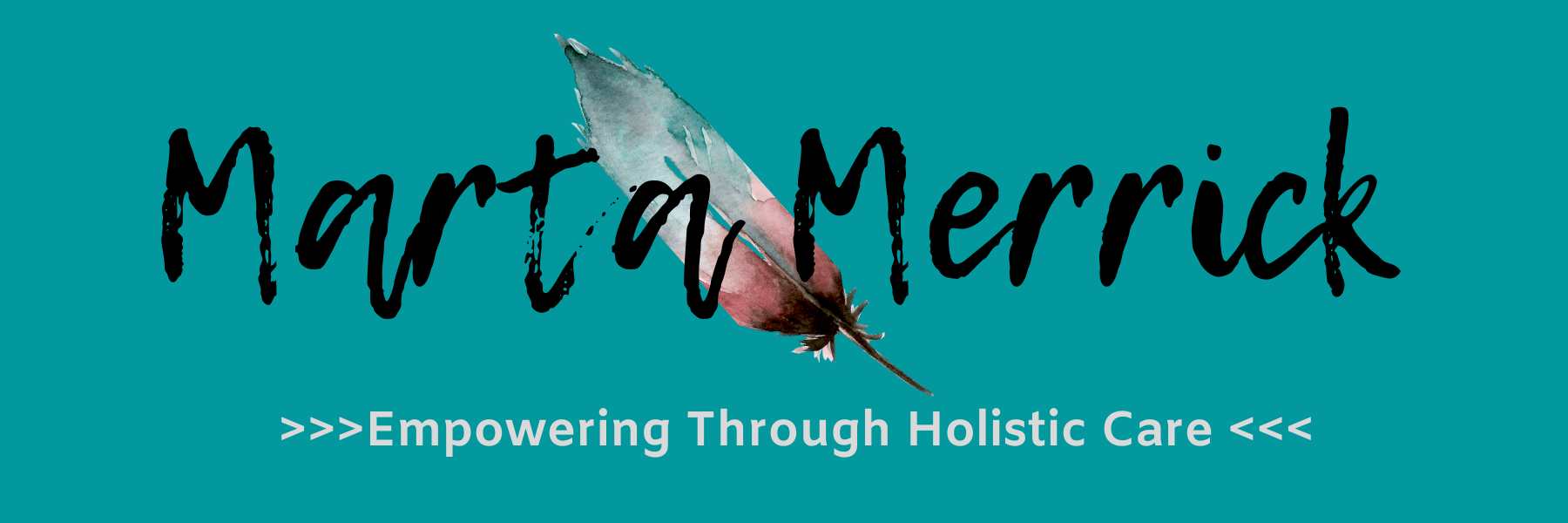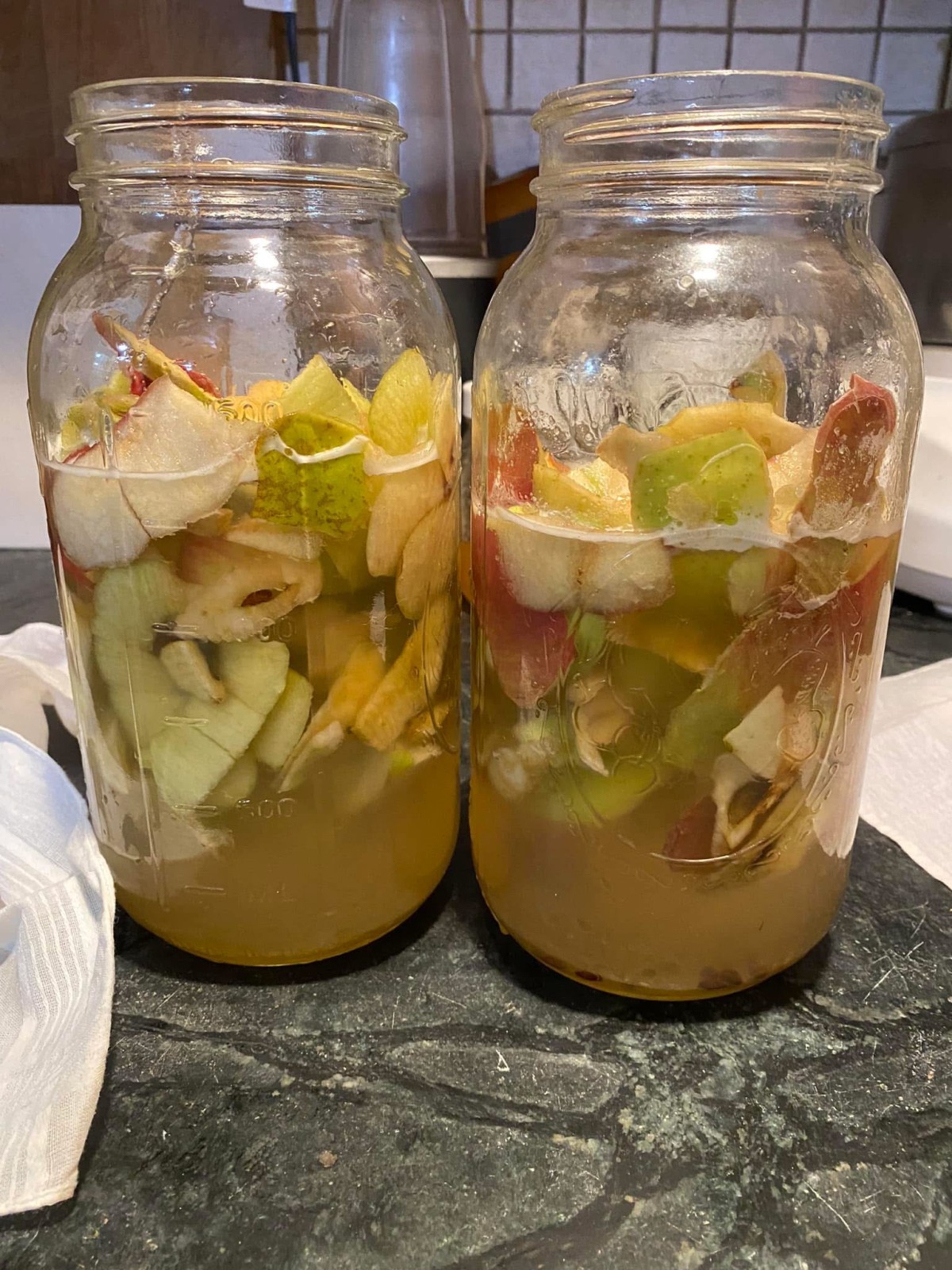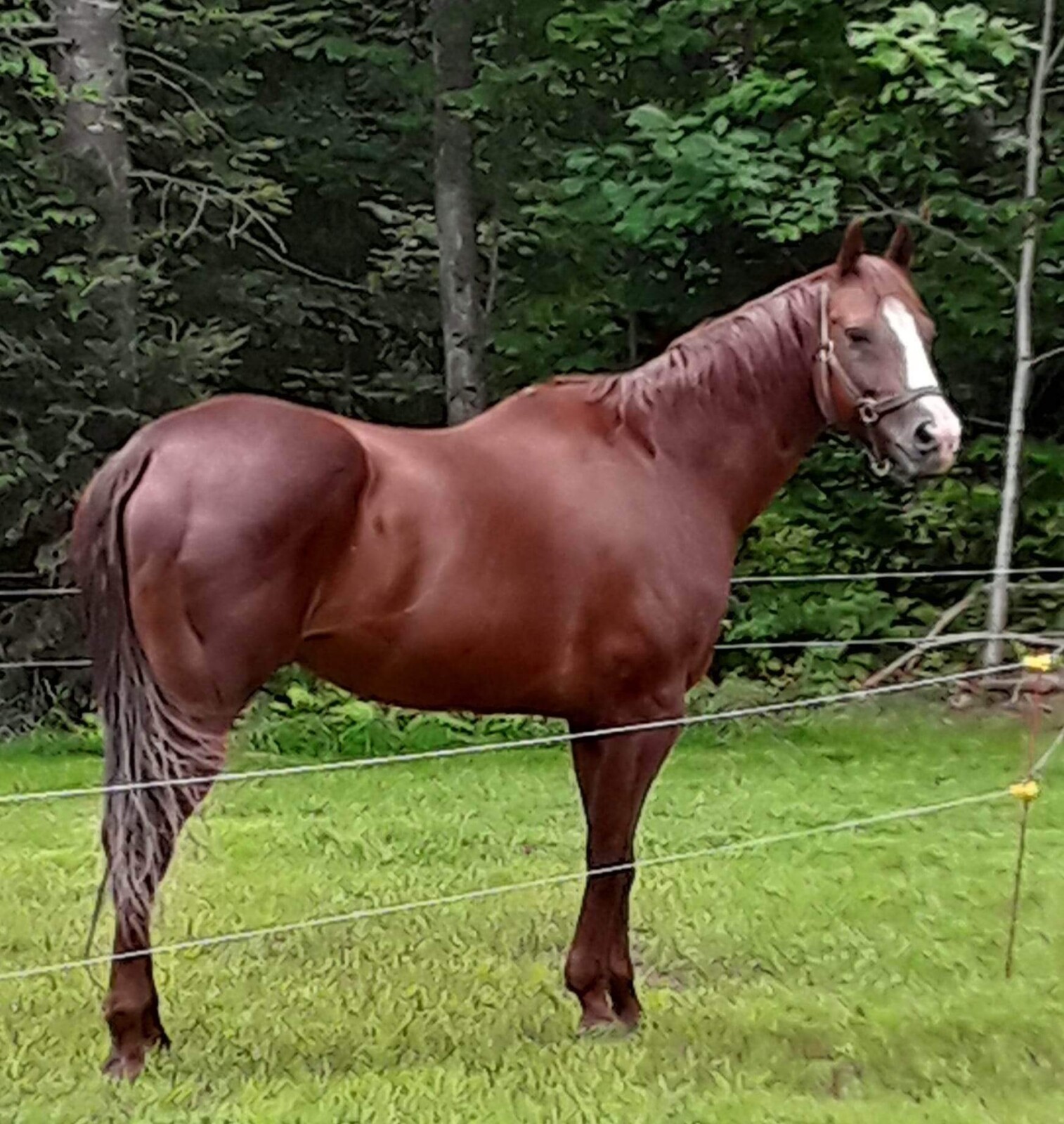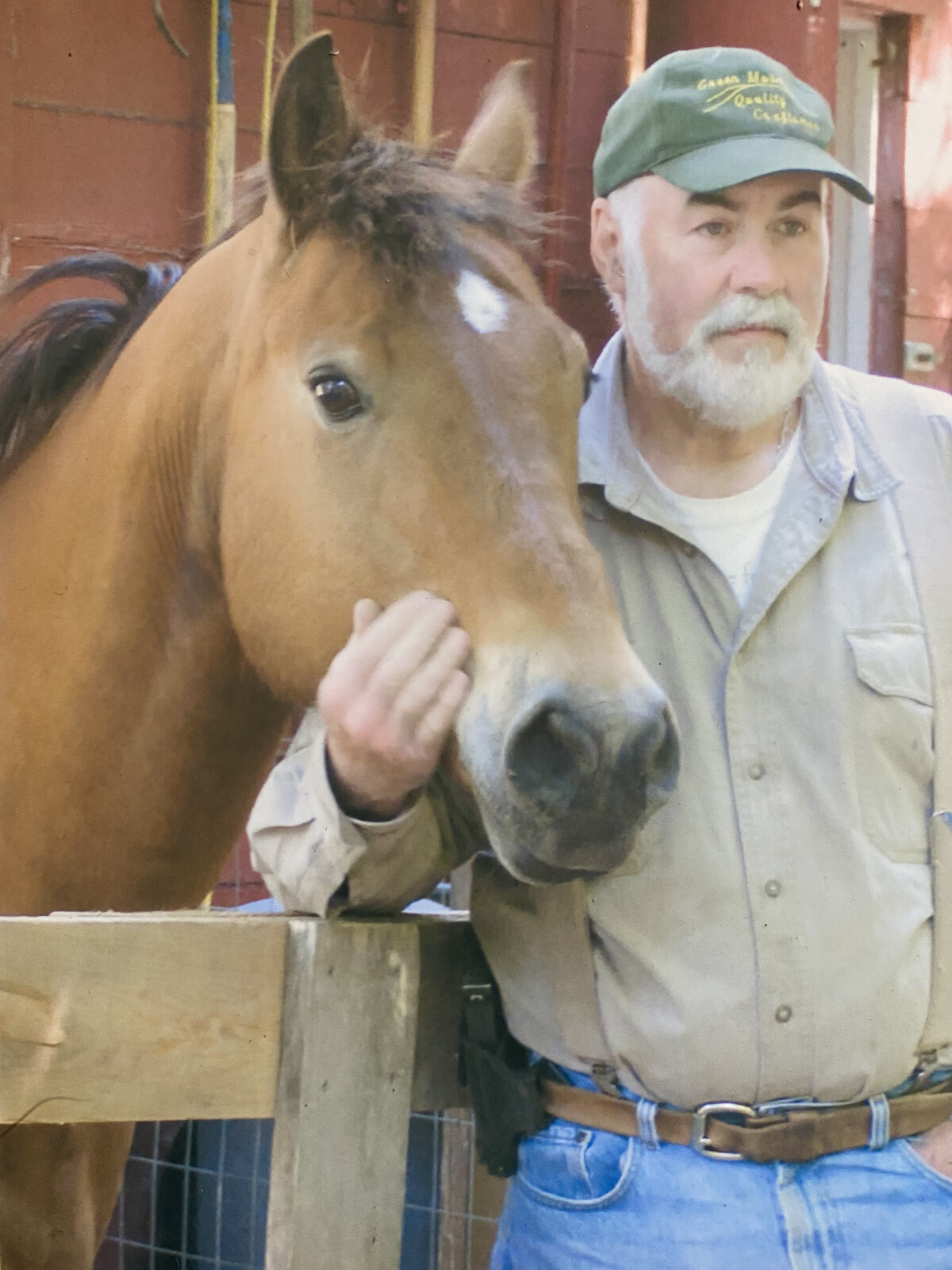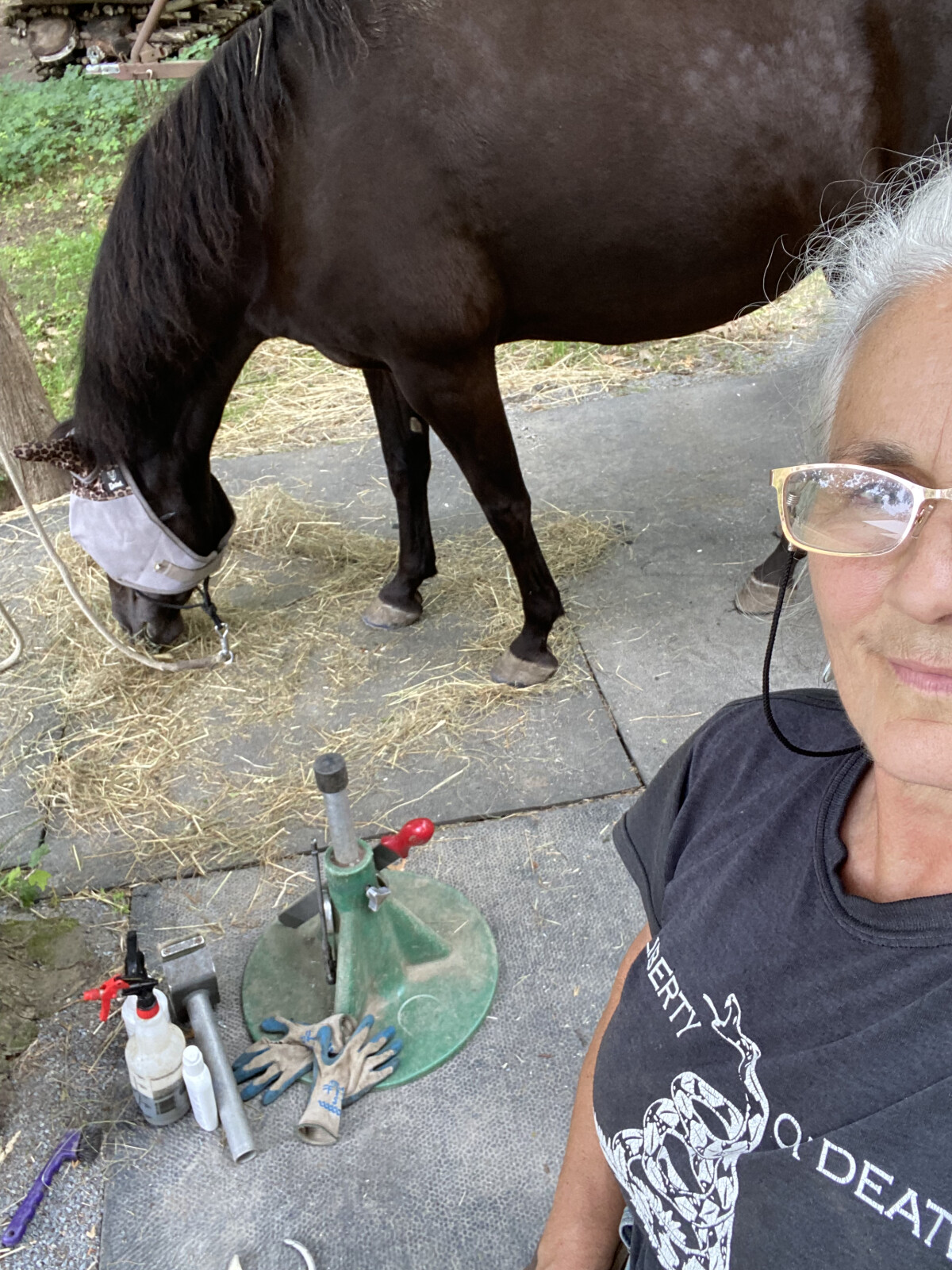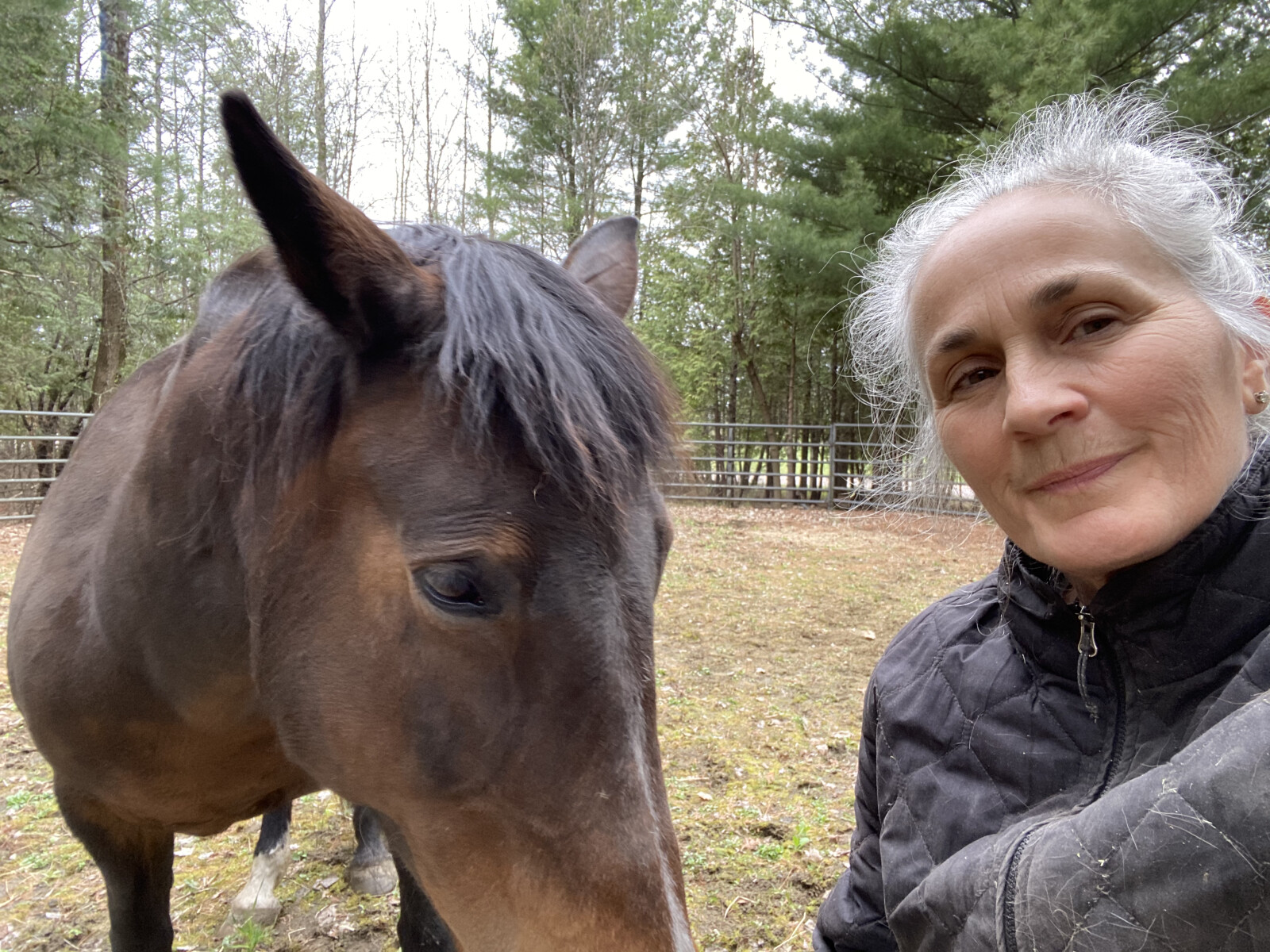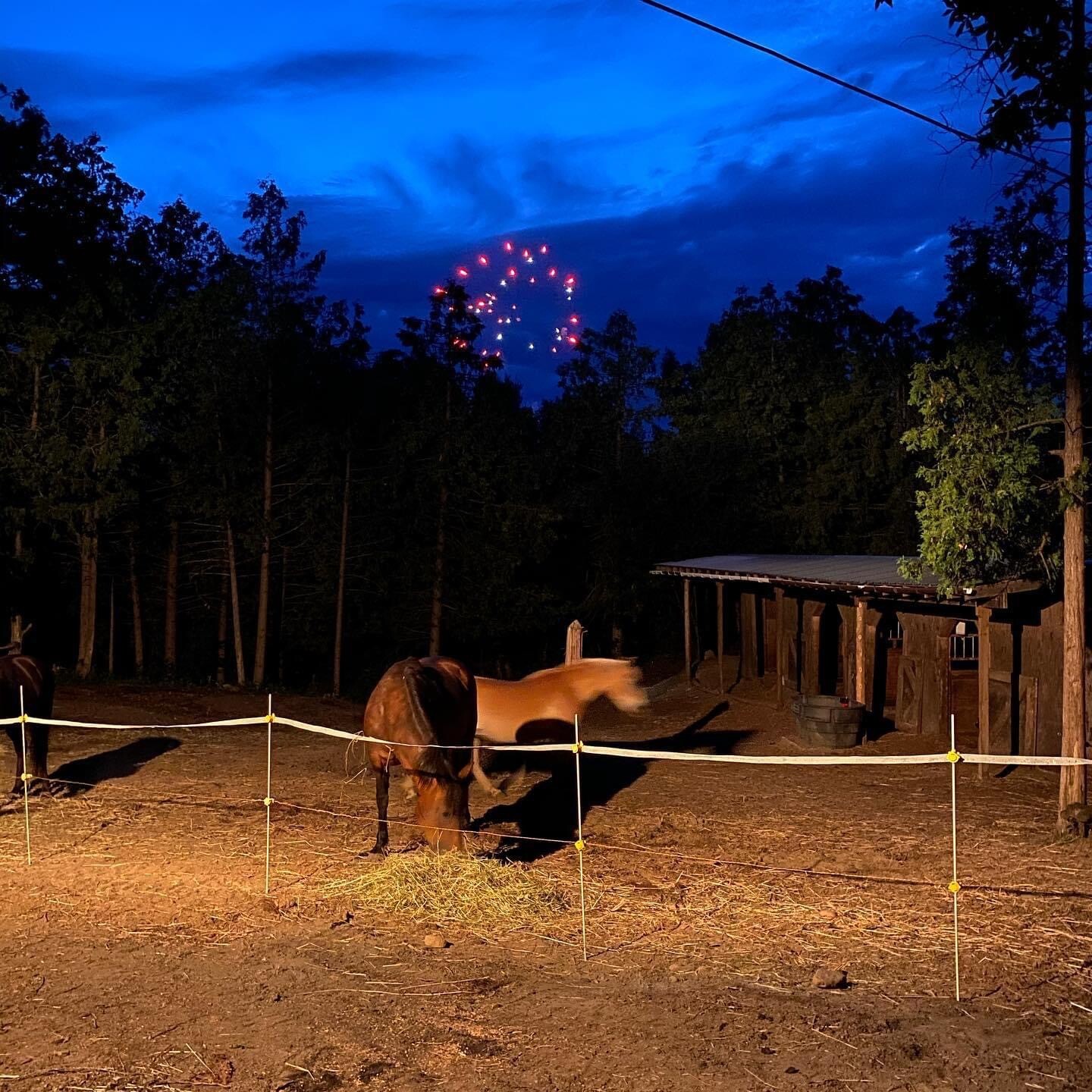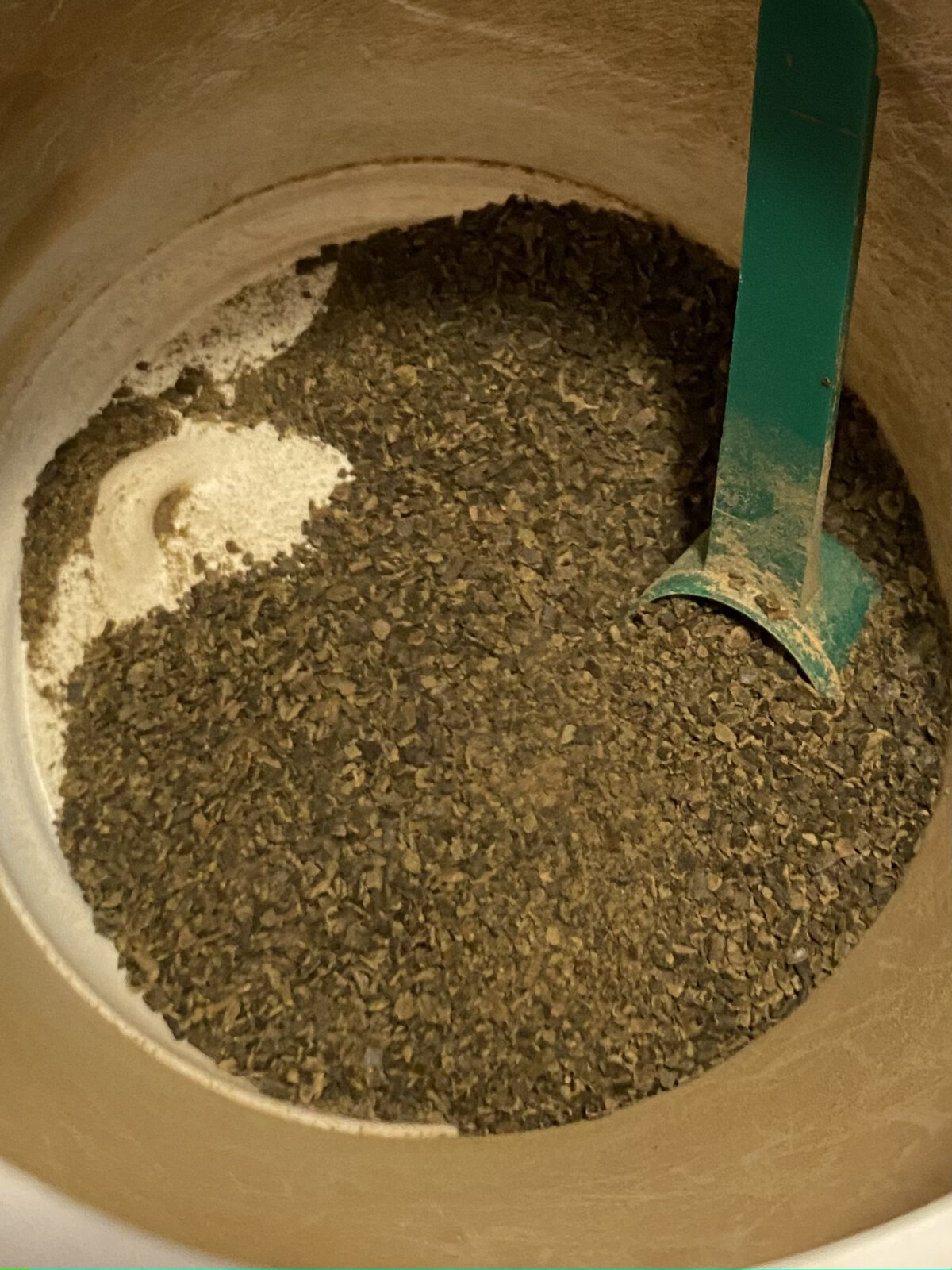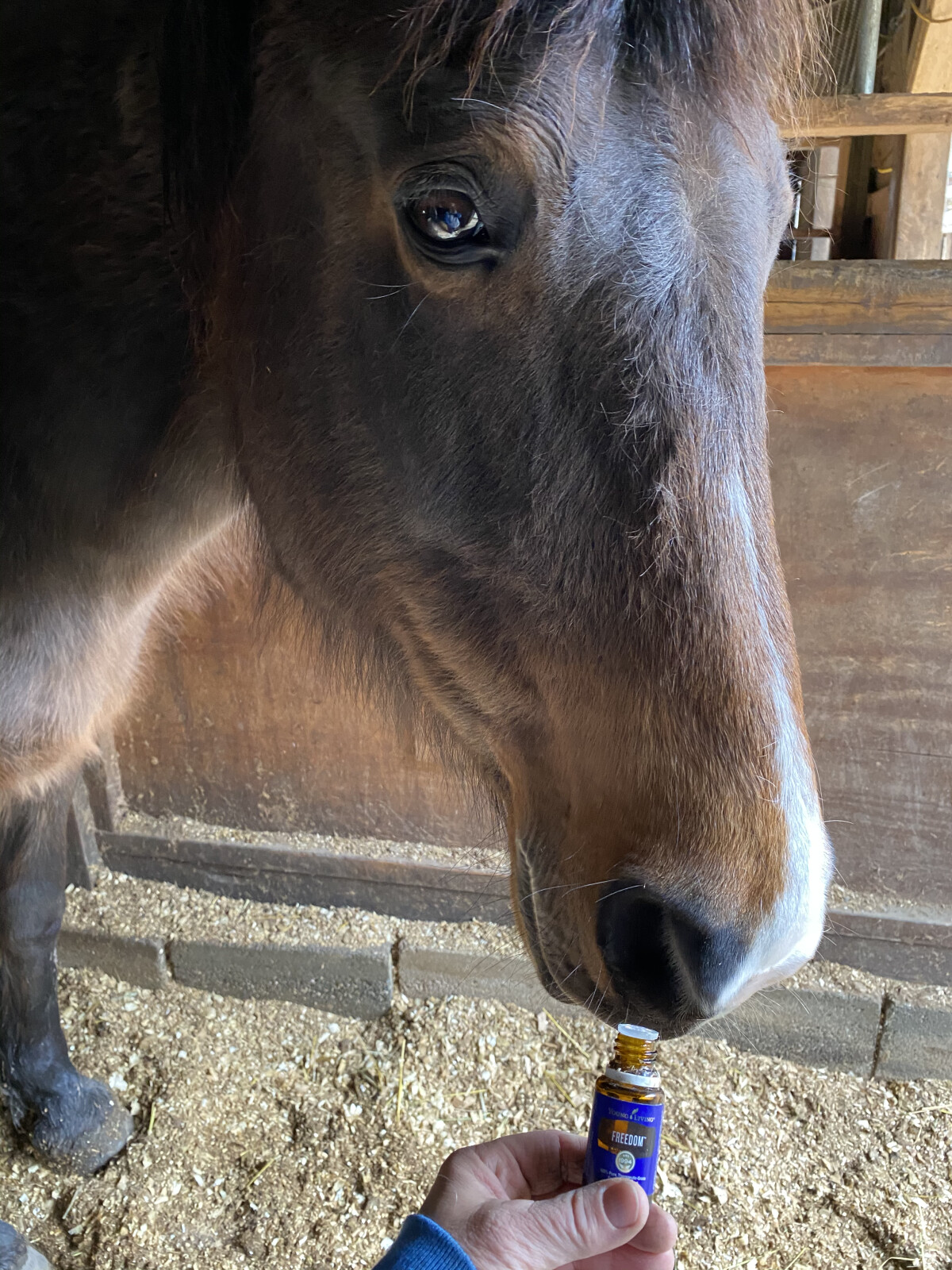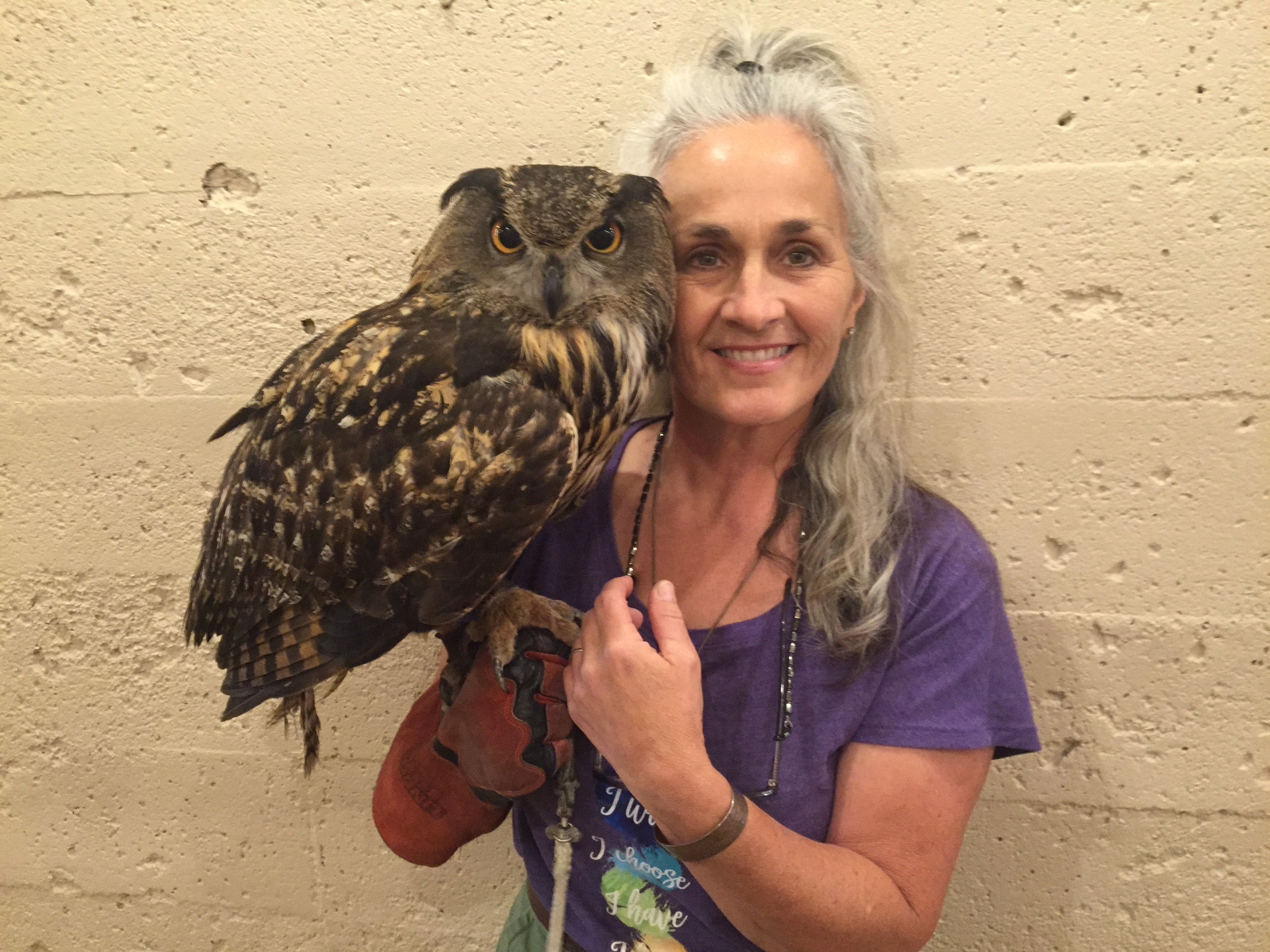
There were many times during my full-time trimming days that I felt like a broken record, saying the same thing over and over to clients when it came to taking care of their horses’ hooves…
Often when something is happening to our horses, we just want to make them feel better. So doing something quick, easy and topically is the norm. But there is usually more going on and if we just look a little deeper, we can get at the cause of the problem. Then take steps to remedy it.
Before we get into the solutions, let’s take a look at what is happening in the hoof in terms of an abscess. The connection between the hoof wall and internal structures is made up of laminae. These are finger-like protrusions that when healthy, have a very strong bond and hold the outer wall tight to its internal structures.
When we look at a healthy hoof, we can see smooth, tight hoof wall growing down from the top at the coronary band. When the hoof is fed well with adequate minerals it is a work of art! It is when imbalances occur that inflammation can result causing the laminae to become weak and lose their strong connection. In this weakened state, it is easy for an overgrown hoof to work as a lever to pry the wall away from the sole at ground level. When this happens, it is easy for dirt and debris to make its way up into the hoof.
If you’re a little fuzzy on some of this and would like to know and see more, check out the free workshop in my The Hearts of Horses: Empowering Through Holistic Care community. There are videos that introduce you to the parts of the hoof as well as the internal structures as shown on a mustang cadaver hoof.
In order to get at the source of the abscess issue, we must deal with the inflammation first and remove the cause of it. The number one thing, that many do not realize, is the amount of sugar in our horses' lives have everything to do with their hoof health. Finding the sugars in their hay, grass, grains, supplements, trees containing sugar in their bark within their living space, treats… and removing them will stop the inflammation. Each horse will be different in their thresholds but as their caregiver, it is up to you to figure out their specific needs.
Once the sugar has been removed, make sure your mineral levels are good. Test your hay to see what may be low or missing in your area. Feeding a good supplement is helpful (we cover this in the holistic care community too!). Feeding the hoof is everything!
Another helpful piece to this abscess puzzle is movement. A key part of helping a horse to move out of the discomfort of an abscess is to allow them to move (vs. stall rest). The more the movement, the more the blood flow, the quicker it resolves. Generally, an abscess will last 7-10 days. Set up your horse’s environment so that he is allowed to move yet protected from harm from the other horses.
A third, key piece to this puzzle is their trimming schedule. Getting your horse trimmed based upon their rate of growth and how much they self-trim is beneficial to them. Knowing when the hoof needs to be trimmed is something you must learn to recognize (check the free workshop for help here too!). This will help you to know the appropriate time frame for trimming your horse.
Learning more about the hoof so that you can have a conversation with your hoof care professional will be a huge benefit. You see your horse daily, do all their care and can recognize subtle changes in them. Being able to have a conversation with your hoof care provider about any changes will be most helpful to them for your horse’s care.
If you’re interested in learning more or would like to learn to trim your own horses, grab my course here. It will give you all the tools and information you need for you to learn to trim your own horses’ hooves. When you use the code 50off you can purchase at half price.
Finally, soaking the hoof that is experiencing an abscess. I have found soaker boots extremely helpful and easy to use. As a former EasyCare dealer, I started with the Easy Soaker and really like it. I also use an Rx boot when I need to keep things clean and covered up.
A few of the items I have found most helpful in the soaking process are Epsom Salt, Thieves Household Cleaner, an essential oil blend called Melrose for cleansing and Wintergreen to help with the discomfort. Just a ¼ cup of the salt, half a capful of the Thieves Cleaner, 4-8 drops or so of Melrose and the same for Wintergreen. Add warm water (about a quart) and pour into the boot (which is already on the foot!). I let them soak for 20-30 minutes.
A few of the items I have found most helpful in the soaking process are Epsom Salt, Thieves Household Cleaner, an essential oil blend called Melrose for cleansing and Wintergreen to help with the discomfort. Just a ¼ cup of the salt, half a capful of the Thieves Cleaner, 4-8 drops or so of Melrose and the same for Wintergreen. Add warm water (about a quart) and pour into the boot (which is already on the foot!). I let them soak for 20-30 minutes.
I hope this has been helpful for you and if you haven't already, I hope you will join us in our holistic care community.
Marta
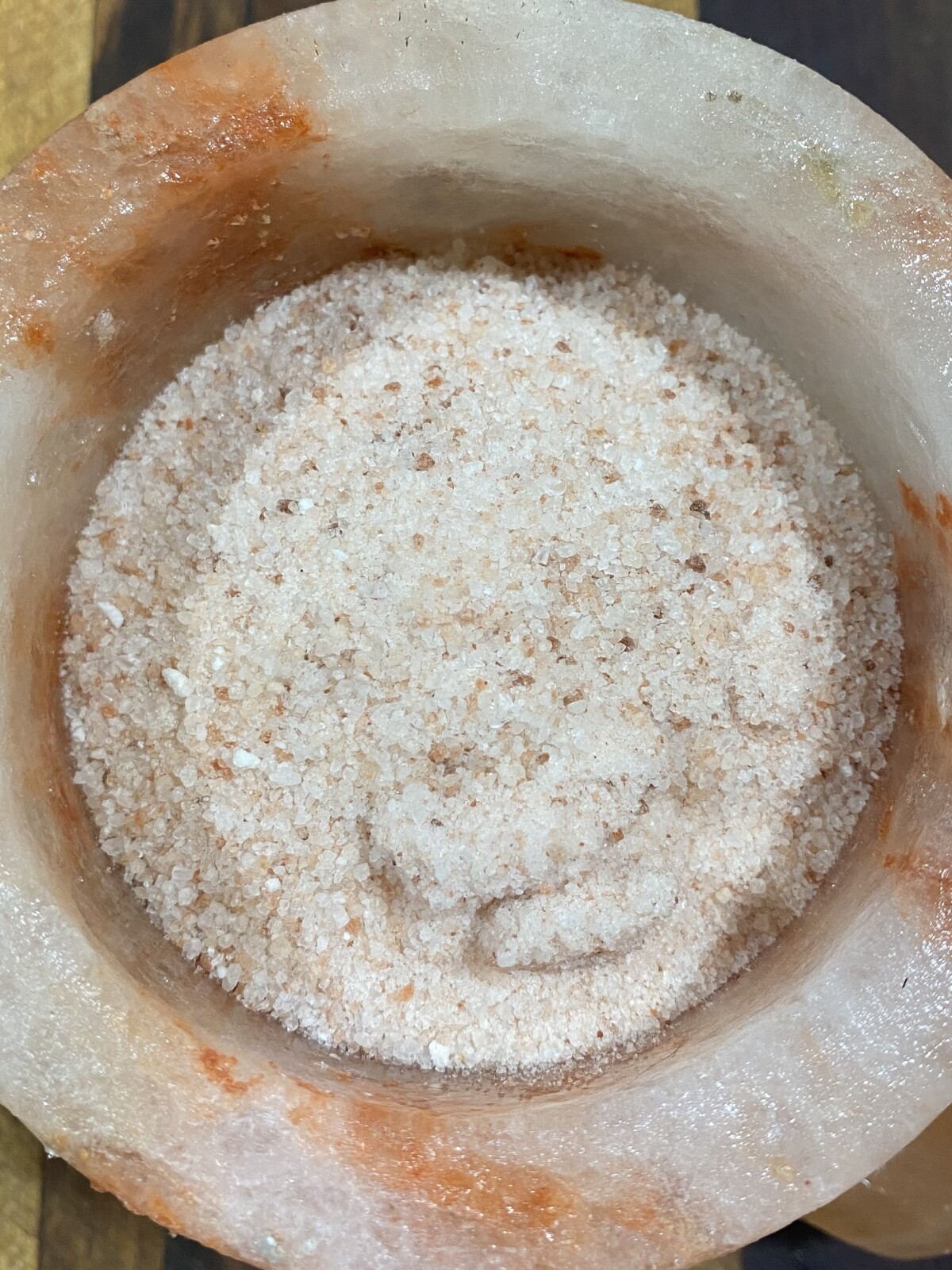
A recent post that I shared in my Hearts of Horses group about the importance of salt for our horses especially in hot weather, opened a discussion on the use of Himalayan salt. It got me wondering…so I did a little research.
The only mineral which a horse has a taste for is salt. In situations where an animal is deprived or deficient, they will seek it out readily. As caregivers for our horses, it is critical that we provide some form of salt, as many functions of the body depend upon it.
Some of these critical functions are…
- Heart contraction
- Intestinal movement and fluid balance
- Absorption of nutrients in the gut
- Muscle contraction
- Nerve function
- PH balance
- Keeping the body hydrated
- An averaged size horse, in cool weather, needs a minimum of 1 oz per day of salt. 2-4 oz for that same horse in hot weather.
Legend has it that the salt beds of Pakistan were discovered by Alexander the Great’s horse, Bucephalus, who stopped to paw and have a lick! Side note: Bucephalus died in battle in that area and a town was later named after him.
Much of the Himalayan salt we purchase originates from an area of hills in Pakistan known as the “salt range” which is hundreds of miles away from the Himalayan Mountains. The hills are a remnant of a lagoon that existed 600 million years ago.
This Himalayan salt does contain minerals, but only in very minute amounts. Such minerals as magnesium, zinc, calcium and even iron. Again, they contain only very minute amounts that would not be enough to consider as a supplement for your horse.
The fact that Himalayan salt is very hard, in chunk form, your horse would not be able to bite it. Even with steady licking, they would not be able to consume the minimum needed on a daily basis especially in hot weather! However, the salt chunk is resistant to rain so hanging it for your horse, in or out of the stall/barn area would be a great relief and/or distraction during a confinement situation.
The fact that it is salt, means that it does encourage your horse to drink more water. This is always a good thing as approximately 70% the body is water and many body functions also require it!
There is one very important mineral that you cannot get from Himalayan salt though and that is iodine. Iodine is necessary for healthy thyroid function. The thyroid regulates hormones and is easily thrown out of balance by deficiency and/or toxins that are in many horse care products. Granulated iodized white salt covers your bases on this one. Or if you feed a kelp product your horse is probably already receiving their necessary amount of iodine.
While the benefits and popularity of the Himalayan salt make it seem terrific for your horse, the bottom line is… it is safe and ok for your horse. It can even be included in the salt/mineral area of your track set up. It would also be beneficial as a relief and distraction for a confined horse.
The big question you want to ask yourself is… are my horses getting their minimum daily requirements for salt? The easiest way for them to get this is by providing a granulated salt, either in their feed or free choice in their living space as they generally cannot take in enough by licking a block.
Are you interested in more helpful information for caring for your horses? Join the community I mentioned, The Hearts of Horses; Empowering Through Holistic Care and be sure to look through the GUIDE section at the top of the page for all kinds of helpful holistic care topics!
All the Best,
Marta

Horses are a herd animal meant to live and roam with their “family”. This offers safety, emotional comfort and a feeling of belonging within the “family”. When we put them in living situations that are very different from their instinctual norm, we are immediately setting them up for problems. How much, what and even when we feed our horses has a huge impact on their stress level, gut health and even their emotional well-being. At the heart of all dis-ease is stress in the body. There is no greater culprit than emotional stress for wreaking havoc in the body. Soothe the animal, set up their life as nature designed for them and release the stress…
Let’s look at how we keep our horses. Horses are built and wired to move and eat continually on a daily basis. In the wild, it is normal for a herd to cover around 25 miles in a day. They browse on a variety of grasses, tree bark and plants while moving over a variety of terrain that proves beneficial for their hooves as well as the rest of their being. When its rest time they hang as a group, with a few of the mares standing watch over the herd. The track system lends to this lifestyle, mimicking how horses live in the wild.
Does your horse’s daily routine look like this? If it does, congratulations to you! Your horses are likely ulcer free and happy in their herd! Getting horses out of the long days and nights in a stall and getting them moving with the herd will increase their feelings of safety and trust. It will allow them to tap into the energy of their herd dynamics and serve to settle them within their group, relieving stress.
Browsing for food! Allow your horse to move about to access their food. Standing in one spot to eat hour after hour does not help their gut or the rest of their body! Offering a variety of whole foods is your best bet for keeping your horses gut balance. Avoiding things like processed grains and instead substituting foods like flax, chia seeds, Timothy/alfalfa cubes will go a long way for providing the nutrients needed while avoiding the stomach upset.
Adding in enzymes like Allerzyme and Essentialzyme has been a game changer for one of my guys! Clearly his gut balance was off and he was acting like a grumpy old man. He is now back to his gregarious, silly self (that’s him in the photo)! Other items like pre and probiotics, Life 9, are beneficial to keeping the gut balanced and have a place in our horse care. There are also products like aloe vera juice or bentonite clay that can offer a soothing solution to the problem gut.
By incorporating some of the things I’ve talked about above, chances are your horse is already feeling better. If there are still troubles, checking in on their emotions by evaluating their energy centers is a helpful thing to do. When the solar plexus is blocked there is a connection with feelings of not belonging, fear of abandonment, defensiveness, feeling trapped, anxiety and even feeling tired. With this knowledge, you can utilize a selection of essential oils to support your horse emotionally. I have a great chart and mini course that outlines how to identify the emotions based on the body and suggested oils to use. Grab it HERE.
If you suspect your horse does have ulcers and would like to confirm that, there is a non-invasive test that can be done. It uses fresh fecal matter to check antibodies to detect two equine specific blood components. It's called Succeed. Positive results for this test confirm the presence and potentially location of inflammation, lesions and/or ulcers. It is necessary to use fecal material within 30 minutes of it leaving the body. Results show as quickly as 5 minutes but not longer than 15 minutes. It is only available to veterinarians, so contact your vet to access this product.
I would also incorporate Healing Touch For Animals techniques to help clear the energy. There are other holistic tools that can be used as well. Tools like red light therapy, PEMF and more!
Interested in learning more about some of these areas I’ve touched on? There’s loads of information in the Guides section of my group The Hearts of Horses; Empowering Through Holistic Care.
Join our community HERE and feel empowered as you care for your horses!
All the best,
Marta
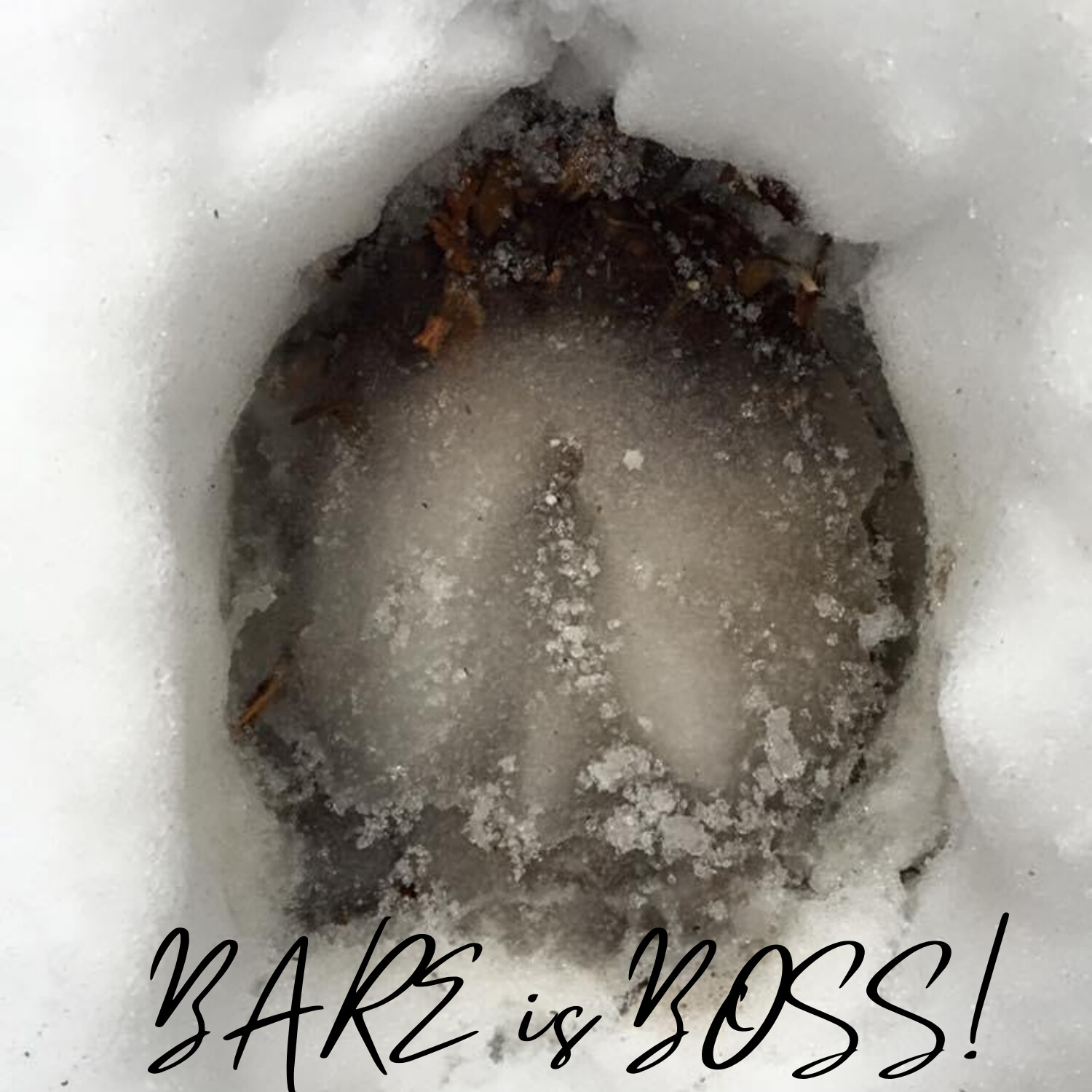
Goin’ Bare…It’s Easier Than You Think For Your Horse To Go Barefoot!
There are, however, some key lifestyle factors that are critical to include in your horse’s life in order for the transition to be successful! First, the hooves need proper nutrients to grow in healthy, strong and well-connected, there needs to be stimulation through movement over varied terrain, you’ll need a regular trimming schedule either by a professional or by learning to trim your own horses and lastly, there will be a transition period where the hooves will need protection with padded boots.
Let’s look at nutrition first. It’s a great place to start to grow healthy hooves. One of the most detrimental ingredients that ruins more feet… is sugar! There are hidden sugars in so much of what is given to our horses. Everything from grain to supplements to treats. It is in virtually every item that goes into your horses mouth, including grass and hay! Understanding and controlling the sugar in your horses diet is going to be a major step in going barefoot with your horses. One of the easiest ways to do this is put your horse on an anti-inflammatory diet. This means you primarily feed grass hay and provide minerals needed that are not accounted for in the hay. If other feeds are needed look at whole foods like flax, chia or hemp seeds that add beneficial Omega-3’s. The important thing is to avoid processed grains and ingredients like corn, soy and molasses. There is also a supplement that I started giving mine for joint health yet realized how great it was for creating healthy, strong feet! It contains the building blocks for good skin, hair and hoof growth. You can read about it here. And if you'd like more information on the basic nutrition for your horse's needs, check out the guide I made up here.
Next you’ll want to make sure you’re encouraging your horses to move in their home environment. The hoof is a blood pumping mechanism who’s purpose is to expand and contract to pump blood back through the rest of the body. The simple act of spreading hay into multiple piles in their environment will encourage them to move and eat. Putting up a series of hay bag stations around their space will offer the same benefit as well. By incorporating this simple feature you will be encouraging the growth of healthier, stronger hooves as well as supporting a healthy digestive system! Include, in some high travel areas, abrasive terrain to help stimulate and condition the foot to grow a more dense sole and create go-anywhere hooves!
Maintaining a regular trimming cycle for your horse’s rate of growth is crucial to going barefoot. The cycle can vary depending upon your horse’s nutrition and even the amount of wear their hooves get. In some environments horses can self- maintain their hooves! For many though setting up a 4-6 week schedule to maintain a healthy foot is a good guideline. Finding a good barefoot trimmer is helpful or if you are so inclined, you can learn to do the trimming for yourself. With the help of your trimmer checking in on you, it is possible for you to learn to use a rasp and knife to maintain your horse’s hoof walls and bars. Of course there is some learning that needs to happen first and practice with guidance. Taking an active role with your trimmer right now can set you on that path. Asking questions, paying attention at your trimming sessions and in general being curious about your horse’s feet. If trimming your own horses is something you’d like to pursue, I have a go at your own pace course along with a FB support group for any help you might need. Get the course here.
Lastly, your horse will most likely need some sort of padded hoof boot protection for a period of time. This time will vary for each horse. The factors I talked about above and how well you have incorporated them into your horse’s lifestyle will have a great impact on this. Having been an Easy Care dealer when I had my practice, I am partial to them. However, the important thing here is finding a boot that fits and will stay on well while your horse is out with his herd. Boots need to be taken off daily to give the foot time to “breathe” and to check for rub spots or any other possible discomfort. Utilizing boots to protect your horses hoof and reduce any potential pain in this process will significantly impact their transition time.
Are you interested in learning more about transitioning your horse out of shoes, nutrition, booting or living a healthy, holistic lifestyle? Maybe you'd like to check out a free workshop on hooves? Its all in here... The Hearts Of Horses; Empowering Through Holistic Care
